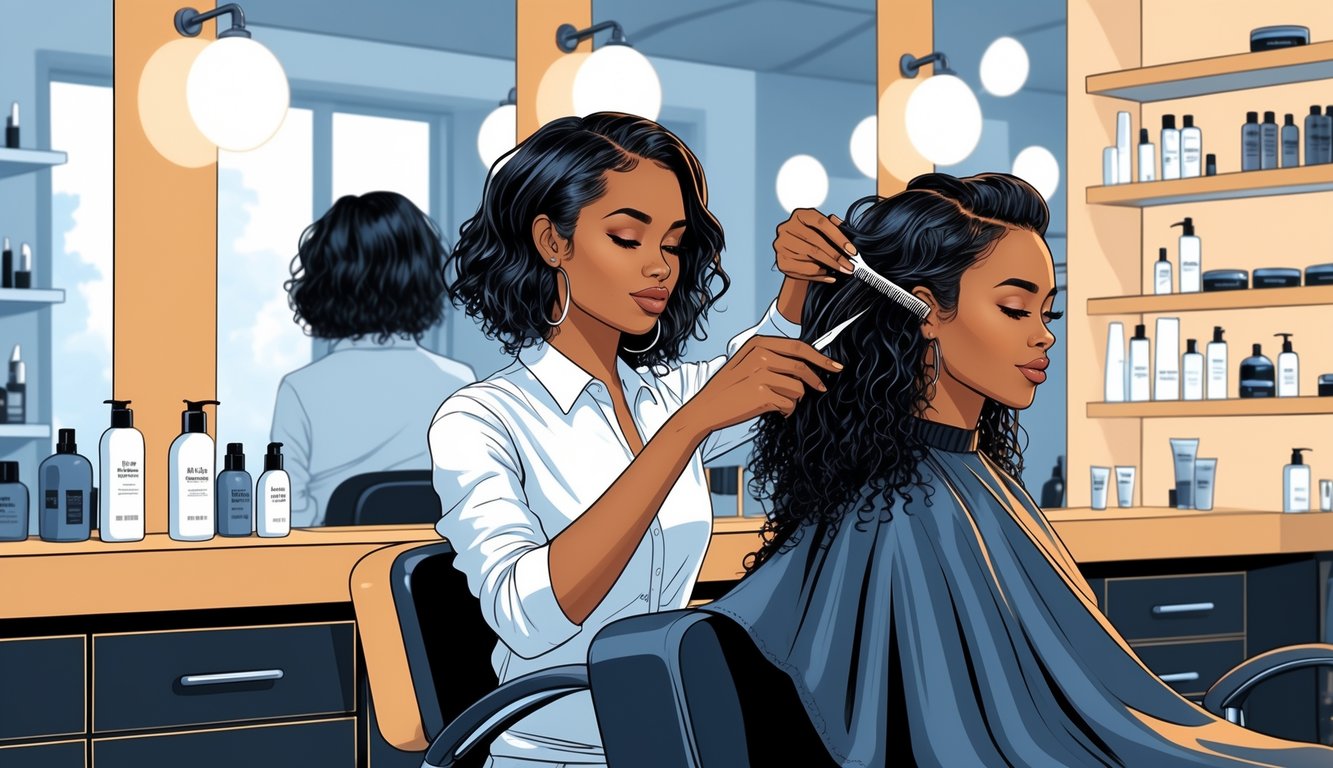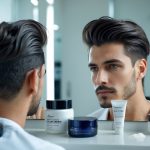
The Role of Advanced Education for Stylists
Coffee’s about to spill, phone’s blowing up, and I’m still trying to remember if anyone on staff has pulled off a silk press without frying the ends lately. Basic licensing? Basically useless for real-world textured hair. Aveda and all the big brands are scrambling to catch up, but change is slow—like, glacial.
Keeping Up With Latest Textured Hair Techniques
Someone said, “Textured hair isn’t a trend—it’s reality for half the population.” And it’s true. Mizani’s 25 Miracle Milk, new coil creams, product launches every week, and by the time you figure one out, clients are quoting TikTok hacks involving rice water. Marie Claire says schools are finally adding textured hair education, but for experienced stylists? Who knows. Texture bootcamps pop up everywhere, and the best ones throw you in the deep end—try doing a full braid-down on a mannequin, timer ticking, everyone watching.
Watching Gen Z stylists livestream twist outs while I’m fighting knots? Humbling. More annoying is when clients come back after a “specialist” left them with uneven shapes or broken edges. The only thing that ever helped me: shadowing a mentor who could spot moisture issues before even touching the hair. Forget cookie-cutter training—real skill means staying humble, always learning, and, yeah, spending weekends with curl charts.
Overcoming Knowledge Gaps in the Salon
What drives me nuts? People assume every stylist knows which curl cream won’t turn into beads if there’s oil in 3B hair. Not even close. I watch great cutters panic and grab the flat iron whenever real texture walks in—even though pro groups are pushing for all-hair-type licensing. But you’ll still hear someone mutter “that’s extra” when a type 4 client wants a style, pretending it’s about time, not skill.
Here’s the thing: salons love blaming “the curriculum,” but most gaps would shrink with a couple hours of actual texture education—even a live Zoom with someone who’s seen every porosity under the sun. I once made my whole crew write down the differences between 2B and 4C, swap notes, and half of us still missed the basics. Training’s never perfect, but at least bias gets called out faster, and repeat mistakes start to fade. Sort of.
Frequently Asked Questions
Every chair, every day, same questions—does “just water” count as moisture, why are my curls fried after a week, can I use my regular detangling brush on kinky hair and expect it not to snap? Maybe you bought that miracle oil from Instagram, too.
What’s the most common oversight people make when styling their curly hair?
Skipping hydration, then loading on gel. Classic. I see it every Tuesday—people rush, skip conditioner, wonder why their roots are dry. Vernon François (look him up) once said curl patterns are ecosystems, not categories. Still, half my clients ignore leave-in.
Like that time someone sprayed dry shampoo and kept flat ironing—her coils never bounced back. Never. Conditioning before product should be obvious, but so should brushing your teeth, and here we are, having the same conversation again.
Can you explain the top methods to avoid heat damage for textured hair?
Lower the temperature. Seriously, don’t trust that “safe for all hair” label—my so-called fancy ceramic flat iron still fried my twist-out. Why? Because I got lazy and skipped heat protectant. Regret. Tippi Shorter (you know, the celebrity stylist who’s always popping up on behindthechair.com) says over and over: let textured hair air-dry before you even think about heat styling. Makes total sense, but then you walk past a blow dryer display and suddenly you’re questioning everything you know about physics.
If you’re not glazing on a silicone serum (not drowning, just a light coat), you’re basically just hoping for the best. I read somewhere—don’t ask me where, probably an Instagram infographic—that like 65% of stylist “fixes” for textured hair are just dealing with burnt ends. So yeah, use the cool shot on your dryer or just walk away from the heat altogether. Curling wand? Only if you’re aiming for that crunchy, fried look. Not judging, just saying.
Why is it crucial to avoid sulfates in shampoos for coily hair types?
Using a regular sulfate shampoo on coily hair is like tossing your favorite hoodie in a vat of bleach for fun. Sulfates strip every bit of oil, and coily hair is already desperate for moisture. Dermatologists warn about it (sometimes in that “I told you so” tone), and stylists kind of mutter about it, but people still buy into the “deep clean” hype.
I mean, my aunt clings to her sudsy shampoo like it’s a family heirloom, swears it’s fine. Then someone else always brings up a “clarifying” day that just ends in a week of knots. Labels don’t exactly shout warnings, but sulfate-free options are everywhere now, and that’s not a coincidence.
What are the best practices for detangling natural hair without causing breakage?
Honestly, sometimes I stare at my drawer full of broken paddle brushes and wonder who actually uses a wide-tooth comb right. Water—like, a lot of water—plus a slippery conditioner or aloe, and splitting hair into sections is the only way. Starting dry? Hope you like crunchy ends and massive knots.
One thing I picked up at a layering workshop: always work from the ends up. Sounds obvious, but apparently not, because last week I watched someone try to “speed detangle” with a teasing comb. They’re still regretting it.
Could you recommend some daily haircare tips to maintain moisture in kinky hair?
I keep water-based leave-ins in the fridge—yeah, it’s a little odd, but it’s the only thing that helps with the midday puff. Misting with diluted aloe vera juice? I swear it works better than any of those viral “magic oils.” Petroleum greases? They just sit there, never actually hydrate anything. Why do they still sell those?
Am I the only one who sleeps with a humidifier next to the bed? Maybe. Oh, and don’t wash every day. I saw this tip at QC Makeup Academy: shampoo every 5-7 days, max. Anything more is just asking for brittle hair.
How important is it to stick to a consistent trim schedule for healthy textured hair?
Okay, so, is anyone else tired of hearing that only straight hair “needs trims”? Because, honestly, who came up with that? I swear, every time I skip a trim, my split ends just keep going—like, what’s their rush? One time, I got lazy and didn’t touch my curls for seven months. Disaster. I lost three inches, and the ends looked like sad spaghetti.
Barbers love to toss out that six-to-eight-week rule, but let’s be real, sometimes it’s more like ten weeks, especially if you’re hiding your hair in protective styles. But, hey, ignore trims for long enough and suddenly you’re in my chair, begging for a miracle. Spoiler: nobody’s thrilled about a surprise big chop.



